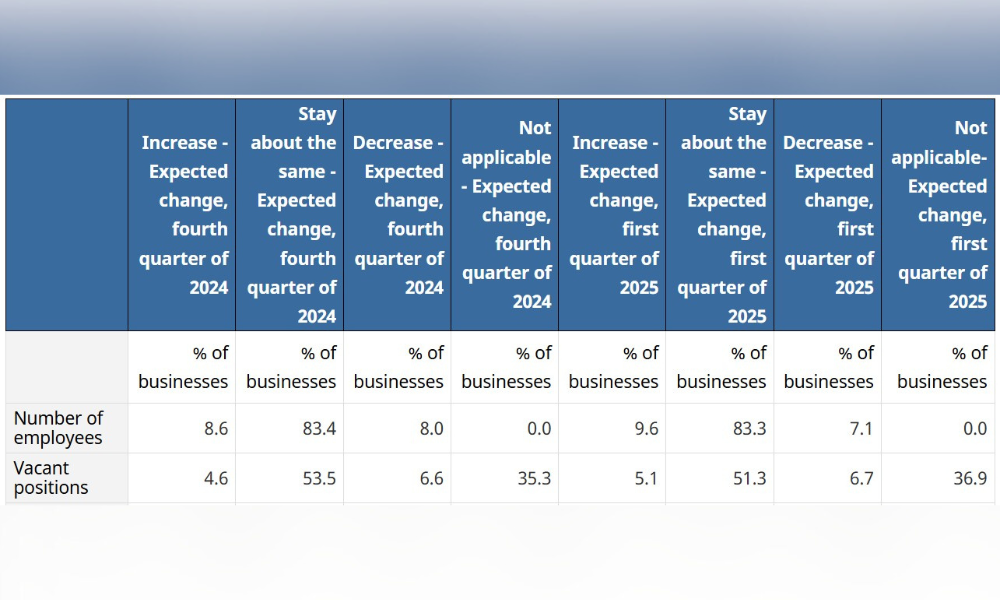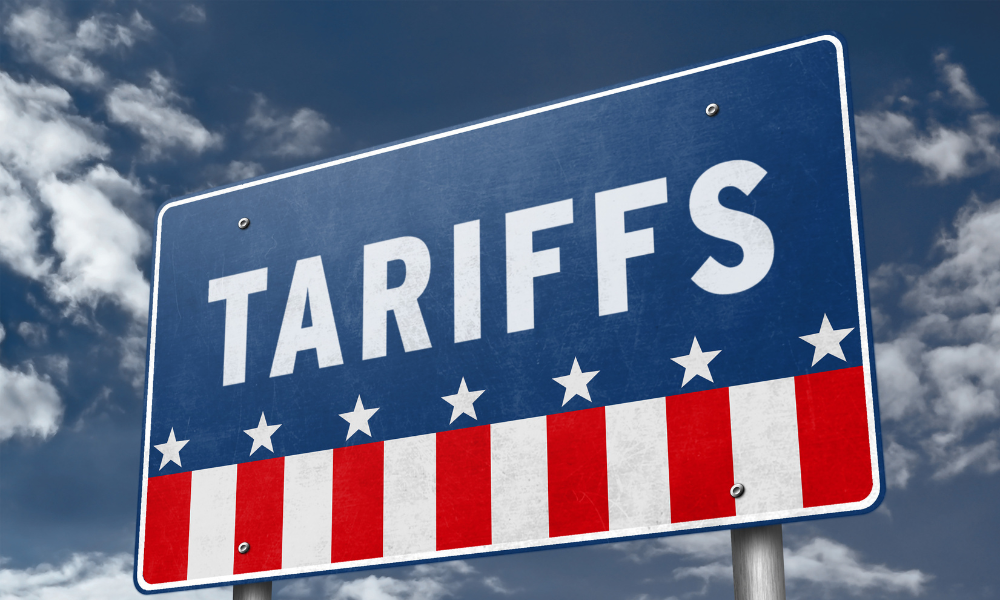But fewer than 1 in 10 employers expect to increase staffing in Q1 2025

As Canada’s tariff dispute with the United States continues, most employers across the country remain confident about their business outlook, according to a recent study.
Nearly three-quarters (73.1 per cent) of businesses report feeling very or somewhat optimistic about their future over the next 12 months, maintaining a steady confidence trend since mid-2024, reports Statistics Canada (StatCan).
The proportion of businesses reporting an optimistic outlook has consistently remained above 70 per cent since the second quarter of 2024, according to the report.
Meanwhile, 16.7 per cent of businesses expect their sales of goods and services to increase over the next three months, consistent with 16.6 per cent in the fourth quarter of 2024. Businesses in retail trade (24.4 per cent), manufacturing (23.4 per cent), and arts, entertainment and recreation (19.8 per cent) lead the way in this area.
At the same time, 24.8 per cent of businesses expect to raise the prices of their goods and services over the next three months.
CEOs globally continue to focus on growth in 2025 despite material challenges and risks ahead, according to a previous report from the Conference Board.
Despite the positive business outlook, few employers expect to increase their workforce in early 2025, according to StatCan.
Similarly, only a small proportion of companies anticipate an increase in open positions.

Strong business performance in 2024
The strong business optimism among Canadian employers is backed by their performance in 2024, according to StatCan’s survey conducted from January to early February 2025.
Nearly one-third (32.9 per cent) of businesses report that their revenues were higher in 2024 than in 2023, with an average revenue increase of 22 per cent.
Businesses most likely to have higher revenues in 2024 are in:
-
finance and insurance (47.0 per cent)
-
arts, entertainment and recreation (43.0 per cent)
-
manufacturing (42.2 per cent).
Meanwhile, over one-third (35.8 per cent) of businesses indicate that their revenues remained the same in 2024 as in 2023.
A further 31.3 per cent of businesses had lower revenues in 2024 compared to 2023, with an average revenue decrease of 25.6 per cent. The businesses most likely to have lower revenues were in:
-
accommodation and food services (42.5 per cent)
-
wholesale trade (40.1 per cent)
-
construction (39.8 per cent).
For most Canadian businesses (72.6 per cent), operations were not disrupted by labour disputes in 2024, according to StatCan.
Just over one-tenth (11.6 per cent) of businesses reported disruptions due to labour disputes impacting transportation or logistics providers, while 10.4 per cent experienced disruptions due to supplier-related labour disputes.
Nine in 10 Canadian business leaders “wholeheartedly believe” that the federal and provincial governments “must stand firm in protecting Canada’s sovereignty and values” and that includes fighting tariffs with tariffs — even if it hurts their business, according to a previous KPMG report.
What are the biggest challenges facing Canadian companies?
While business optimism remains high, challenges persist.
The most pressing obstacles expected over the next three months include:
-
inflation (12.6 per cent)
-
recruiting skilled employees (10.5 per cent)
-
the cost of inputs (6.2 per cent).
Nearly six in 10 (57 per cent) CHROs and 75 per cent of people leaders say they are considering leaving their roles, according to a previous report.
More than three-fifths (62.5 per cent) of businesses anticipate cost-related obstacles over the next three months, down from nearly two-thirds (65.7 per cent) in the fourth quarter of 2024, reports StatCan.
Businesses in accommodation and food services (68.3 per cent), arts, entertainment and recreation (56.9 per cent), and retail trade (56.5 per cent) are the most likely to cite inflation as a challenge.
Meanwhile, the cost of inputs is tied as the second most expected obstacle, anticipated by over one-quarter (26.7 per cent) of businesses. Those most affected include agriculture, forestry, fishing and hunting (47.9 per cent); accommodation and food services (44.9 per cent); and manufacturing (39.6 per cent).




